Bigger isn’t always better, but creating the illusion of a more open space doesn’t hurt. Galley kitchens are a popular choice for homeowners looking to maximize efficiency in small spaces. These U-shaped layouts offer functionality and style for compact kitchens. In this article, we’ll explore nine ways to design your galley kitchen to transform it into a bright, functional, and inviting space.
Galley kitchens typically feature two parallel counters that create an efficient work triangle. Balancing functionality with looks can make the space feel open and inviting despite its compact size.
1. Balance Aisle Space, Light, and Storage
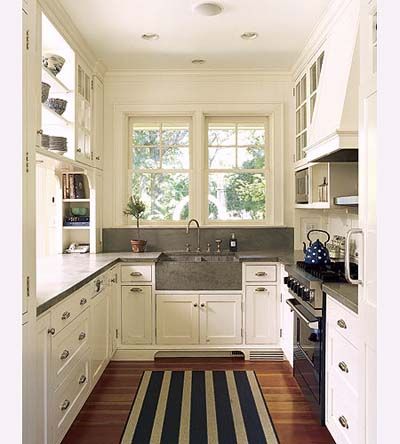
Achieving a balance between aisle space, light, and storage is the key to a well-designed galley kitchen. These elements work together to create a sense of spaciousness and practical functionality. To maximize efficiency in a small space, follow these tips:
- Aim for an aisle width of at least 42 inches to allow comfortable movement.
- Incorporate light-colored cabinets and open shelving to create an airy feel.
- Install a large pass-through window to bring in natural light and connect the kitchen to adjacent spaces.
- Use concealed appliances behind cabinetry panels for a streamlined look.
- Stack your kitchen tools vertically for added convenience and uncluttered countertops.
2. Measure Your Space and Use It Wisely
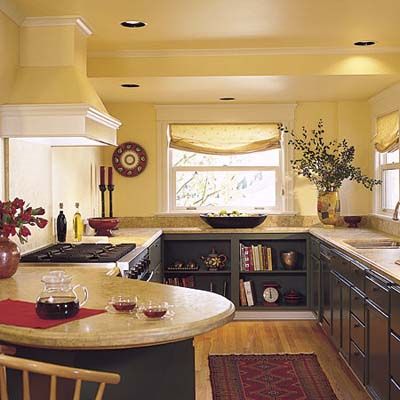
Having a designated space for each kitchen activity, such as washing, cooking, and storing, will improve flow, while accurate measurements ensure that your kitchen accommodates all necessary appliances and cabinetry without making the area feel cramped. Take detailed measurements when designing your galley kitchen. To ensure optimal functionality and prevent congestion, follow these guidelines:
- Aim for an aisle width of 4–6 feet.
- Consider adding a peninsula at the end of the U-shaped layout to create an eat-in space.
- Place the sink and refrigerator on one wall with the range on the opposite side.
3. Use Windows To Open Up the Space
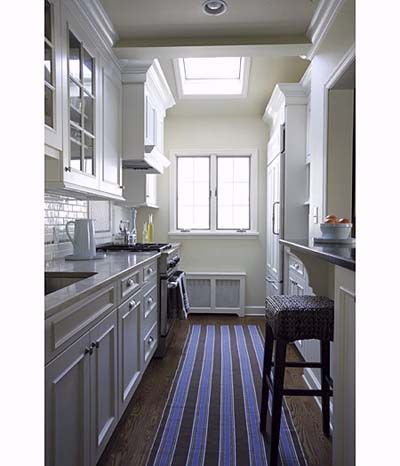
Windows play a big role in making galley kitchens feel more spacious and inviting. Consider these ideas to incorporate windows effectively:
- Install a pass-through window to connect the kitchen with an adjacent dining area.
- Maximize natural light by keeping window treatments minimal or using sheer options.
- Opt for glass-front cabinets with lighted interiors to create visual depth and interest.
- Use the pass-through as a two-seater breakfast bar for casual dining.
4. Create a Cooking Work Triangle
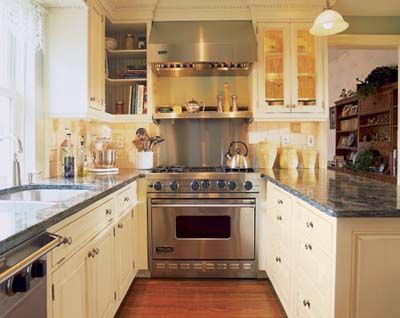
The work triangle is a fundamental concept in kitchen design, particularly in galley kitchens. Focusing on the work triangle streamlines kitchen activities and cooking efficiency while maintaining an organized and visually coherent space. To create an efficient cooking work triangle, follow the steps below:
- Position the sink, refrigerator, and stove in a triangular layout for easy access.
- Ensure the total distance between these three points is between 13 and 26 feet.
- Use vertical space for storage, such as wine cubbies above windows.
- Blend modern appliances with traditional elements to create a cohesive look in older homes.
5. Open Up Your Galley Kitchen With Shelving
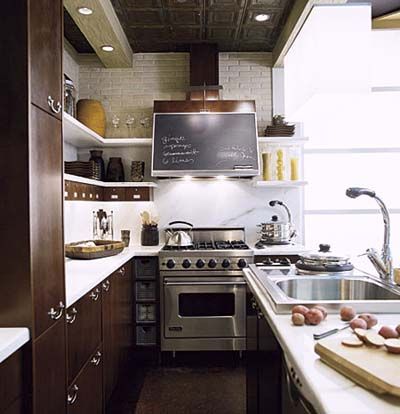
Open shelving is an excellent way to make your galley kitchen feel more spacious and accessible. It contributes to the sense of openness while offering an opportunity to showcase personal style through curated displays of cookware and kitchenware. Consider these shelving ideas:
- Install floating shelves to maintain a clean, minimalist look.
- Mix open shelving with closed cabinets for a balanced approach to storage.
- Replace upper cabinets with open shelves to display dishes and spices.
- Use narrow slide-out mesh baskets for compact, see-through storage.
6. Choose a Focal Point in Your Galley Kitchen Design
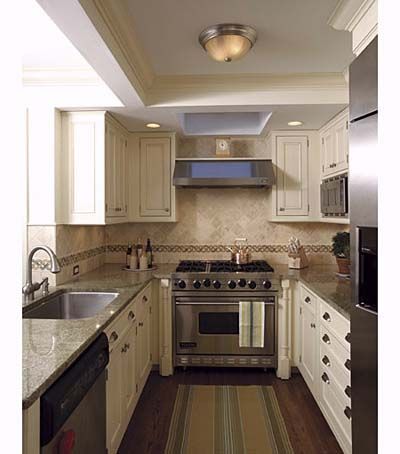
Selecting a focal point can help anchor your galley kitchen design while adding personality and depth. Consider these options for your culinary space:
- Create a striking backsplash behind the sink or stove.
- Install a professional-grade range as a statement piece.
- Use a bold color or unique material for one section of cabinetry.
7. Conceal Clutter and Consider How You Move Around the Space
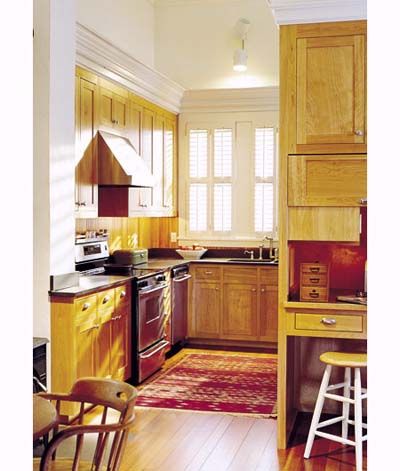
Concealing clutter and planning your layout carefully ensures that your kitchen remains a comfortable and efficient environment for everyday cooking. Here are a few ways you can keep your galley kitchen organized and clutter-free:
- Incorporate a slim pantry cabinet for storing dry goods and small appliances.
- Install a desk with a tambour door to hide paperwork and office supplies.
- Plan your layout to ensure smooth movement between key work areas.
- Use pull-out organizers in lower cabinets for easy access to pots and pans.
8. Rearrange Appliances for Maximum Efficiency

Strategic placement of appliances can improve the functionality of your galley kitchen. Consider these tips:
- Install a counter-depth refrigerator to preserve aisle space.
- Install the microwave over the range to save valuable counter real estate.
- Move the sink faucet to a corner to free up counter space.
- Use compact or built-in appliances to maintain a streamlined look.
9. Explore Smart Storage Options
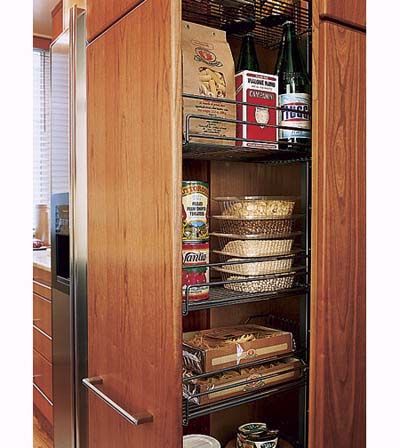
Innovative storage solutions help you make the most of a galley kitchen’s limited space. Here are some smart storage ideas:
- Add toe-kick drawers beneath base cabinets for additional storage.
- Incorporate a magnetic knife strip or utensil rail to free up drawer space.
- Install a pull-out pantry for floor-to-ceiling storage.
- Use vertical dividers in cabinets to organize baking sheets and cutting boards.
Galley kitchens are a great way to create a highly efficient and stylish cooking space—even in small areas. By implementing any or all of these nine design tips, you can transform your galley kitchen into a functional and inviting space. Get creative with storage and layout solutions to make the most of your kitchen.

